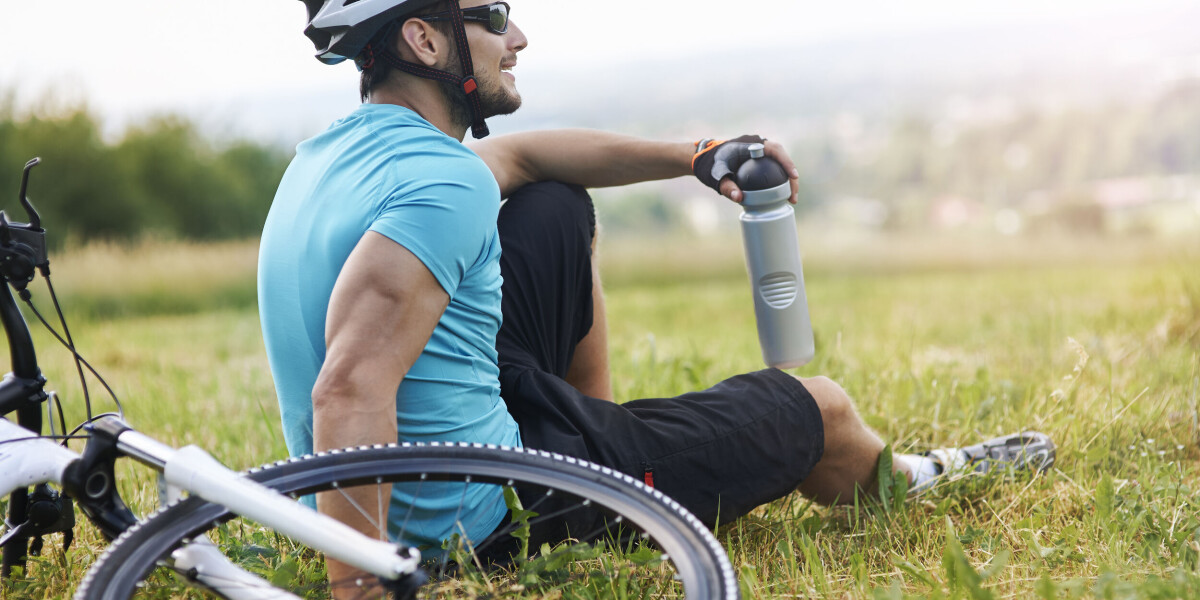
- Select a language for the TTS:
- UK English Female
- UK English Male
- US English Female
- US English Male
- Australian Female
- Australian Male
- Language selected: (auto detect) - EN
Play all audios:
France as a country is famed for its love of cycling, playing host to the world's biggest cycle race every year. But it's not just a sport for professional athletes in France, and
there are plenty of options if you don't fancy slogging up the winding roads of the Alps. Summer is the perfect time to dip your toe into the French cycling scene, whether you are
approaching it fresh faced or as a seasoned bike trekker. Bike festivals are a great way to do this, where you can buy new equipment, listen to talks and get advice on riding and general
bike maintenance. CYCLING FESTIVALS If you like the idea of cycling but do not know where to start, a festival could be the answer. Ten thousand visitors are expected at _Vélo Vélos, the
Festival du Vélo_ in Nantes (April 20-21, 2024). As well as showcasing all the latest developments, there will be a market, talks, interviews, competitions, demonstrations, and chances to
try out new bikes. Entrance will be free. READ ALSO: FRENCH CYCLING: FRANCE'S HISTORICAL PASSION FOR THE BICYCLE Reflecting the sign of the times, Lyon is holding its first ever_ Vélo
Festival_ over the weekend of September 2-3, 2023, with _vélo pour tous_ on Saturday (tandems, quad bikes, handisports workshops (for cycling with a disability), _vélo cargo_ (cargo bike),
and electric bikes. Sunday will host a market where you can try and buy, a recycling point to leave old bikes and accessories, plus a women’s bike ride to raise money for cancer charities.
_Vélo Passion_ in Avignon on October 27-29, 2023, will include leisure, sport, tourism, competitions and _vélotaf_. Forty thousand square metres of exhibition space will encompass demos,
sales and even vélo polo – yes, a polo match played on bicycles. BMX 2022 world champion Sylvain André will be there too. Corsica is hosting a cycling festival this autumn from 27-29
October, for_ VTT_ (mountain bike) lovers. The island has 220km of dedicated bike trails, and this year the French _VTT_ World Cup will be held during the festival, with nearly 400 riders
expected to take part. This is your chance to have a go, learn more about cycling sports, and meet the pros. _The Loire Bike and Troc Festiva_l on July 9-10, 2023, will have a slightly
different, more laid-back vibe. It will be at Montbrison on Friday, and Chalmazel-Jeansagnière on Saturday. There will be a second-hand bike market, and cycle rides for everyone, even for
2-6 years olds in the shape of a trail to be ridden on _draisiennes_ no less. Afternoon demonstrations and free concerts will make this a convivial affair ideal for families. If you love
cycling as a spectator sport, however, the _Cyclist Film Festival_ is for you. For two hours, a collection of amazing short films about cycling will be shown in 20 different French cities
this summer. Find tickets and details of dates from the CYCLISTFILMFESTIVAL.FR website. CYCLING ROUTES When it comes to finding good places for ordinary souls to enjoy pedalling along with
no stress, the paths around Lake Annecy take some beating. They are mostly on the water’s edge, making it easy to stop for a swim or a picnic. Leave Annecy heading south on the west side of
the lake, and you will find you can reach as far as Talloires on the east side of the lake before being confronted with the incredibly steep Roc-de-Chère, which only the super fit would
dream of approaching on a bicycle. You can either put the bikes on a boat from Talloires to Annecy Town (check timetables before leaving Annecy) or simply turn around and go back the way you
came. READ ALSO: TOUR DE FRANCE, RACE FOR MADMEN Another place perfect for leisurely pedalling is the Île de Ré, which is almost totally flat and surrounded by inviting beaches. It is also
blessed with beach bars and shacks selling fresh oysters should you need refuelling at any point. There are 110km of cycle paths on the island and four information points, at
Sablanceaux–Rivedoux-Plage, Gros Jonc– Le Bois-Plage-en-Ré, Le Martray–Ars-en-Ré, and La Maison du Fier–Les Portesen-Ré. A handy shuttle service will transport you and your bike from one
information point to another for €1 per person, per trip. The Canal du Midi in the south is also great for cyclists, as the paths are flat and mostly quite shady. There are loads of cafés
and bars along the way. If you start at Carcassonne, it will take around four days, depending how many historical villages you explore, to reach the Mediterranean at Sète. If you are
astonishingly fit and slightly mad, you could always attack the Col de Tourmalet in the central Pyrenees. This is where in 1910, when the first Tour de France rider reached the top of the
hill, he yelled at the organisers, “You’re assassins! Yes, assassins!” At the steepest point the incline is more than 10%, and the average over the 19km route is 7.39%. And if that ride
fails to kill you, you can then attack the ‘Circle of Death’ by cycling from the Col de Peyresourde to the Col d’Aubisque, just an extra 141km. In the summer, once the ski lifts grind to a
halt, the steepest Alpine mountainsides are taken over by cyclists. Again, these are not pedal paths for beginners. They are incredibly difficult and challenging. The Col de la Loze in the
Trois Vallées offers four different cycle routes, but the main route up to the top involves a gruelling 7km climb, sometimes at a gradient of 23%, from an altitude of 1,673m at the start to
2,304m at the end. There are cycle routes all over France, and maps are available at FRANCEVELOTOURISME.COM. You can search for routes by length or difficulty. One of the newest _véloroutes_
to be completed is the _Voie Bleue_, running 700km from Apach on the border of Luxembourg all the way south to Lyon. It passes through the beautiful towns and cities of Thionville, Metz,
Nancy, Ray-sur-Saône, Auxonne, Tournus, Villefranche-sur-Saône, and Trévoux, before finally reaching Lyon. The route takes cyclists along the Moselle valley, the Canal des Vosges, and the
banks of the Saône, until it reaches the confluence with the Rhône. The entire route is signposted and off-road. There are no hills. RELATED ARTICLES BRITON CYCLES 1951 TOUR DE FRANCE ROUTE
FOR CHARITY IN FATHER’S MEMORY OLD ELECTRIC FRENCH POST OFFICE BIKES GET ‘UP-CYCLED’ FOR RESALE KEY POINTS FROM FRANCE’S NEW €2BILLION PLAN TO ENCOURAGE CYCLING







